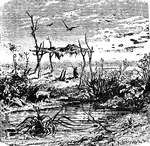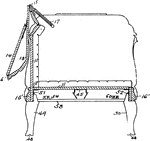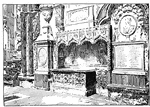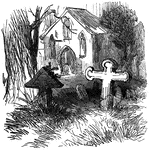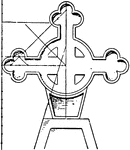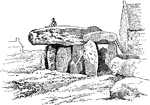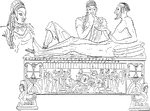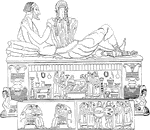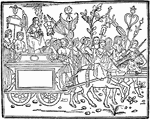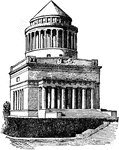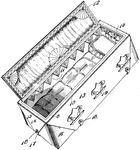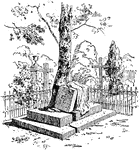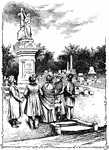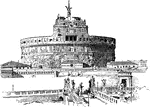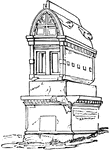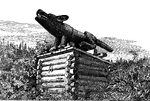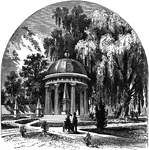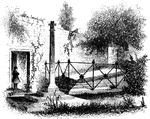The Death Care ClipArt gallery offers 103 illustrations of cemeteries, caskets, and other items related to funerals and burial.
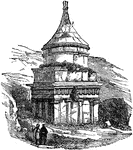
Absalom's Tomb
Also known as Absalom's Pillar. It is traditionally ascribed to Absalom, the unruly son of King David.
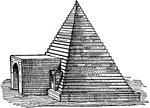
Tomb at Abydos
One, structural and pyramidal, is represented by many examples at Abydos, the most venerated of all…
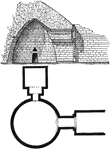
Treasury of Atreus
The Treasury of Atreus or Tomb of Agamemnon is an impressive "tholos" tomb at Mycenae, Greece (on the…
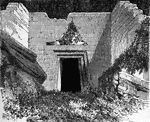
Tomb of Atreus
The Tomb of Atreus also known as the Treasury of Atreus is a tomb located in Mycenae, Greece built between…

Bede's Tomb, Durham Cathedral
He is well known as an author and scholar, and his most famous work, Historia ecclesiastica gentis Anglorum…
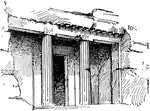
Tomb at Beni-Hassan
Beni Hasan (also written as Bani Hasan, or also Beni-Hassan) is a village in Middle Egypt about 25 km…
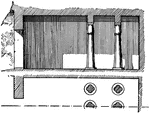
Section and Half-Plan of a Tomb at Beni-Hassan
Beni Hasan (also written as Bani Hasan, or also Beni-Hassan) is a village in Middle Egypt about 25 km…

Lord Burleigh's Tomb, Stamford
Lord Balfour of Burleigh, in the County of Kinross, is a title in the Peerage of Scotland. It was created…
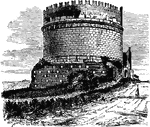
Tomb of Cæcilia Metella
"The usual form of independent monumental tombs was a ponderous tower-shaped block, sometimes square,…

Sarcophagus with Canopy
This sarcophagus with canopy is sculpted in stone. The canopy is in a gothic style and on top of tomb…
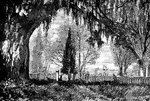
Magnolia Cemetery
An illustration of Magnolia Cemetery located in Charleston, South Carolina. Approximately 35,000 people…

Tomb at Tours of the Children of Charles VIII
"Showing the influence of ancient classical art upon the art of the Renaissance."—Myers, 1905

Antique Bronze Cist
This antique bronze cist is a chest or box like space used to hold the bodies of the dead.

Egyptian Sarcophagus
A coffin or tomb of stone; a kind of stone chest, generally more or less ornamented for receiving a…
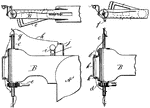
Metallic Coffin
Any box used to bury the dead in is a coffin. Use of the word casket in this sense began as a euphemism…

Tomb of Cyrus the Great
"The mausoleum is built of immense marble blocks, joined together without cement. Its total height,…
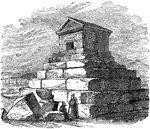
Tomb of Cyrus
"Cyrus caught sight of his brother Artaxerxes, whose person was revealed by the flight of his troops,…
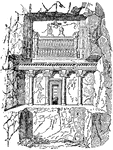
Darius
"The Tomb of Darius, cut in the cliff at Nakshi Rustam, near Persepolis." — The Encyclopedia Britannica,…

The Tomb of Edward the Confessor
King Edward the Confessor (c. 1003 – 5 January 1066), son of Ethelred the Unready, was the penultimate…
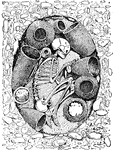
A Prehistoric Egyptian Tomb
"The skeleton lay on the left side with knees drawn up and hands raised to the head. About it were various…

The Entombment
The Entombment is an engraving created by German artist Albrecht Dürer in 1512. It is part of a series…
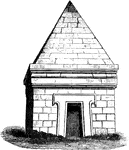
Etruscan Tomb at Castel d'Asso
The most interesting monuments of Etruscan architecture which have been preserved are the tombs. They…

Funeral Cortege
"The funeral cortege, at boston, Mass., of the Sixth Massachusetts soldiers killed at Baltimore. The…

The Great Pyramid of Giza
"The pyramid when completed had a height of 481 feet. It is now 451 feet high. Its base covers 13 acres.…

Godfrey de Bouillon Tomb
"Tomb of Godfrey de Bouillon. During the Crusades, the Kingdom of Jerusalem in 1099. The conquered lands…
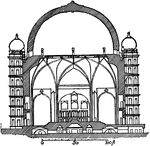
Gol Gumbaz (Section)
The most imposing and original of all Indian domes are those of the Jumma Musjid and of the Tomb of…
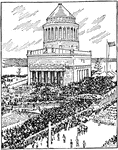
Tomb of General Ulysses S. Grant
The tomb of General Ulysses S. Grant, the eighteenth President of the United States.
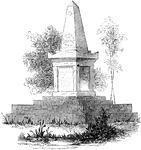
Grave Marker
The marker consists of a square plinth topped by an obelisk and resting on a stepped platform. There…
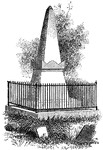
Grave Marker with RIP
An obelisk shaped grave marker with RIP (rest in peace) inscribed on the front. Marker is surrounded…

An Athenian Gravestone
"A relief on the tomb of a certain Hegeso. It represents a woman, seated, taking a jewel from a casket…
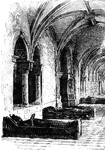
Henry II's Tomb at Fontevrand
In the year 1189, Henry II died the saddest death, perhaps, that an old man can die, for his sons had…
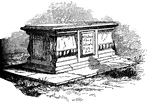
John Bunyan
The tomb of John Bunyan, one of the most famous religious writers of any age. (1628-1688)

Jonathan Mourned
"And Tryphon made ready all his horsemen to come that night: but there fell a very great snow, and he…
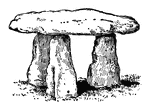
Lanyon Quoit Dolmen
Lanyon Quoit is a dolmen near Penzance. A dolmen, also known as a cromlech, portal tomb, portal grave…

